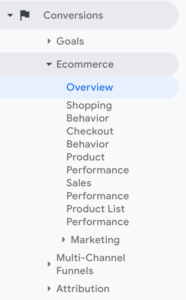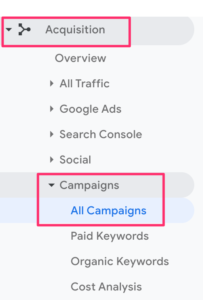Black Friday is fast approaching. The day of the year where people go wild and spend loads of money in stores and online shops. As an owner of an online business, you want people to spend their money at your store. So you want to draw a lot of visitors to your site and seduce them with an awesome discount. But how do you know if your Black Friday campaign was a success? Which steps do you need to take to make sure you can measure that success in Google Analytics? Read this post to find out!
Black Friday extras
You’re probably going to do something special during BFCM weekend. Something extra, more than the usual. You might publish more posts on Facebook, Twitter, Instagram and so on. Perhaps you’re dedicating a special newsletter to the Black Friday sale; you might even send out an extra one. What about your website? Will you add a banner throughout the website? Add a countdown clock? A pop-up? Write down all the things you’re planning to do during Black Friday and Cyber Monday and think about how you’re going to measure them.
1. Measurement plan
In comes the measurement plan. It’s vital to know if you can measure the things you’d like to measure and if you have the data to compare it with. If you already have a measurement plan, grab it and refine it. If not, get some piece of paper and a pen and write down the following:
- Your business objective for this Black Friday sale
- The strategies of your business objective
- The Key Performance Indicators (KPI)
- Set targets per KPI
- Identify segments
There are a couple of sources you can consult for more detailed information: this post from Avinash Kaushik about the measurement model, a Google Analytics YouTube tutorial about creating a measurement plan and these two posts with practical examples of measurement plans: one about Black Friday and one about a charity website.
Once you’ve clarified the above, you need to have an implementation plan so that everything you want to track, is implemented. You might need to ask a developer for certain things. But please keep in mind, measuring something is way, way better than measuring nothing. So if you find this a bit scary, don’t set the bar too high for yourself and measure the things that are easy for you to do.
2. Check your eCommerce tracking
If you own an online shop, you want to gather eCommerce data. Check if you have information about your eCommerce Conversion Rate, the shopping behavior, product performance and revenue.

If you do not see this kind of data in Google Analytics, you might need to implement eCommerce tracking. For more information, read this guide about enhanced eCommerce tracking. Knowing what the shopping behavior, checkout behavior and so on is before Black Friday, gives you the opportunity to compare this data with the data you’re collecting during Black Friday. And that gives you insight into whether or not your Black Friday campaign has been successful.
3. Check goals and funnels
To be able to analyze your visitor’s behavior on your site even more, you can implement goals. You can set a goal for every time someone pressed the ‘add-to-cart’ button. Having a goal with a funnel for your checkout process is also vital. It calculates a goal conversion rate for the entire checkout and shows where people drop off in the funnel. During Black Friday, having this data will allow you to check for technical issues. If you see a sudden drop in the conversion rate or drop-offs, that’s a sign that tells you to dig in further. Check if payment options are working or if you have downtime.
Implement BFCM events in Google Analytics
If you decide to add banners and/or pop-ups or other elements on your websites where people can click on, don’t forget to implement events. Add goals to those events so you can analyze them in Google Analytics. You do want to know if people actually click on them, right? Adding events take in a bit of extra work. Luckily, Google Tag Manager makes implementing events a lot easier. There are a lot of tutorials on the world wide web that show you how to create events. One of my favorites is the video tutorial by Measureschool.
4. Special BFCM UTM tags
To identify all your Black Friday efforts on other sources such as social media and in your newsletters, you can’t live without the proper UTM tags. Using these UTM tags consistently throughout the entire Black Friday sale is key to effectively analyze the success of all your marketing efforts on other websites than yours. A couple of examples:
1a. Promoted post on Facebook
https://example.com/shop/#utm_source=facebook.com&utm_medium=social&utm_campaign=blackfriday&utm_content=promoted-post1b. Regular post on Facebook
https://example.com/shop/#utm_source=facebook.com&utm_medium=social&utm_campaign=blackfriday&utm_content=general-post2a. Text link in Newsletter
https://example.com/shop/#utm_source=newsletter&utm_medium=email&utm_campaign=blackfriday&utm_content=textlink2b. Button in Newsletter
https://example.com/shop/#utm_source=newsletter&utm_medium=email&utm_campaign=blackfriday&utm_content=buttonAs you can see, I used blackfriday as the campaign UTM tag. Use the utm_campaign=blackfriday tag on all sources you’re using that point to your website and have a BlackFriday sales purpose. During and after the sale you can get insights from Google Analytics to see if people from the Black Friday campaign bought anything.

Keep an eye on this campaign during the sale, if it’s not going according to plan, it will allow you to optimize your efforts during the sale. For example: put more money in ads on channels that lead to more sales. You can do a lot of cool things with this campaign; I described all of this in a post I wrote about custom campaigns.
5. Check Google Analytics stats during Black Friday
Google Analytics is great for keeping track if the sale is going right. You can check on a lot of things. Keep an eye on real-time stats, if you see a sudden drop in the number of users on your site, perhaps your site’s down or down in a specific country. You can also check your cart URL and checkout URL in the real-time analysis. If you see a lot of folks there, but no sales coming in, your checkout might not be working. If you just sent out a newsletter, and you see no-one coming to your site from a newsletter, perhaps you’ve added a broken link. The real-time functionality in Google Analytics is your friend here.
Conclusion
If you want to know if your Black Friday sale has been a success and want to know what made it into a success, you need data to compare the data you’re collecting during the sale with. Make sure you’re currently tracking all the data you need that makes you able to analyze your visitor’s behavior on your site. Start with writing down a measurement and implementation plan and check if all tracking is in place. After the sale is over, compare the data of the BFCM sale with your prior data and check what worked and what didn’t work so you’ll know what to do next time! You don’t have much time, so get crackin’! Happy analyzing!
Read more: Analytics basics: Which posts and pages perform best? »
The post Analytics: 5 tips to measure your Black Friday success appeared first on Yoast.
from Yoast • SEO for everyone https://ift.tt/2mRw9hT



No comments:
Post a Comment